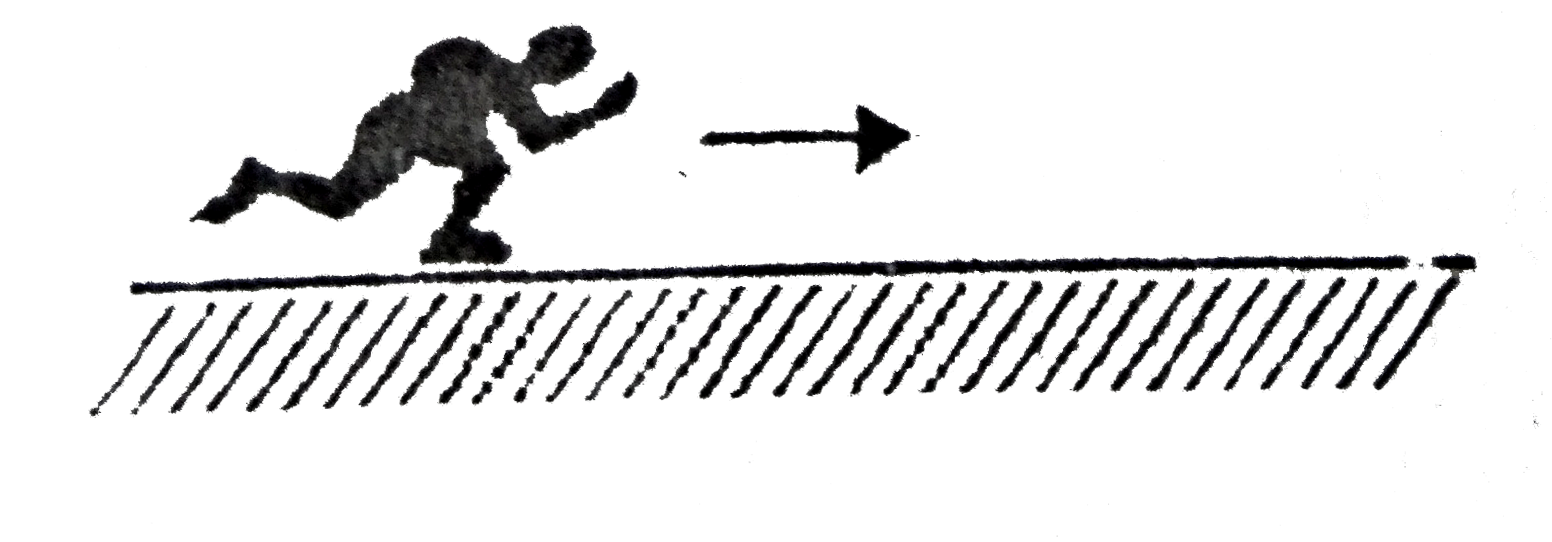Following are three equations of motion
S(g)=ut+12at2v(s)=√u2+2asv(t)=u+at
Where ,S,u,t,a,v are respectively the displacement ( dependent variable ), initial ( constant ), time taken ( independent variable ), acceleration ( constant ) and final velocity ( dependent variable ) of the particel after time t.
Find the displacement of a particle after 10 seconds starting from rest with a uniform acceleration of 2m/s2
10m
100m
50m
200m
The correct Answer is:B
S=ut+12at2
S=0+12×2(10)2=100m
Topper's Solved these Questions
- BOOK - RESONANCECHAPTER - DAILY PRACTICE PROBLEMSEXERCISE - dpp 2 PHYSICS1videos
DAILY PRACTICE PROBLEMS
- BOOK - RESONANCECHAPTER - DAILY PRACTICE PROBLEMSEXERCISE - DPP NO. 5 Physics6videos
DAILY PRACTICE PROBLEMS
- BOOK - RESONANCECHAPTER - CURRENT ELECTRICITYEXERCISE - Exercise54videos
CURRENT ELECTRICITY
- BOOK - RESONANCECHAPTER - ELASTICITY AND VISCOCITYEXERCISE - Advanced Level Problems9videos
ELASTICITY AND VISCOCITY
Similar Questions
A particle having initial velocity u moves with a constant acceleration a for a time t. a. Find the displacement of the particle in the last 1 second . b. Evaluate it for u=5m/s,a=2m/s2andt=10s.
View SolutionVelocity of a particle at any time t is v=(2ˆi+2tˆj)m/s. Find acceleration and displacement of particle at t=1s. Can we apply v=u+at or not?
View Solution
Knowledge Check
- Question 1 - Select One
Following are three equations of motion
S(g)=ut+12at2v(s)=√u2+2asv(t)=u+at
Where ,S,u,t,a,v are respectively the displacement ( dependent variable ), initial ( constant ), time taken ( independent variable ), acceleration ( constant ) and final velocity ( dependent variable ) of the particel after time t.
Find the velocity of a particle after 100m−A10m/sB20m/sC30m/sD0m/s - Question 2 - Select One
Following are three equations of motion
S(g)=ut+12at2v(s)=√u2+2asv(t)=u+at
Where ,S,u,t,a,v are respectively the displacement ( dependent variable ), initial ( constant ), time taken ( independent variable ), acceleration ( constant ) and final velocity ( dependent variable ) of the particel after time t.
Find the velocity of the particle after 10 seconds if its acceleration is zero in interval (0 to 10s)−A10m/sB20m/sC30m/sD0m/s - Question 3 - Select One
Following are three equations of motion
S(g)=ut+12at2v(s)=√u2+2asv(t)=u+at
Where ,S,u,t,a,v are respectively the displacement ( dependent variable ), initial ( constant ), time taken ( independent variable ), acceleration ( constant ) and final velocity ( dependent variable ) of the particel after time t.
Find the displacement of the particle when its velocity becomes 10m/s if acceleration is 5m/s2 all through -A50mB200mC10mD100m
If a man has a velocity varying with time given as v=3t2,v is in m/s and t in sec then :

Find out his displacement after 2 seconds of his start :View SolutionIf acceleration of a particle at any time is given by a=2t+5
Calculate the velocity after 5 s, if it starts from restView SolutionStarting from rest, the acceleration of a particle is a=2(t−1). The velocity (i.e.v=∫ a dt ) of the particle at t=10 s is :-
View SolutionAt the start of a motion along a line the initial velocity is u and acceleration is at. The final velocity v after time t, is
View SolutionA particle is moving with velocity v=4t3+3t2−1m/s.
The displacement of particle in time t=1s to t=2s will beView Solution

